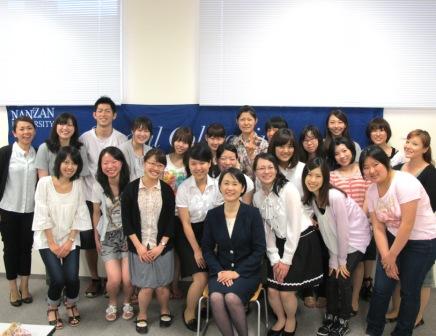
2011.07.11

At the airline event, Professor Kanazawa, who is a professor from NUFS told us about her experience of working as a flight attendant, about jobs in the airline business, an example of a flight to NY, and some exercises of dealing with certain situations. Before deciding to become an flight attendant, she was intending to become a pre-school teacher. However, through her 10 month in the United States, she realized that she wanted to become an flight attendant. There are many jobs in the airlines other than the flight attendants and pilots. For example, air traffic controllers, who not only talk to pilots from all over the world but also monitor foreign news to make sure that unwanted things are not taking place in certain countries. I learned from listening to Professor Kanazawa that being a flight attendant is a very hard job, however, it is really rewarding. She had to stay standing up for a long time while on the plane, and did not have much time to rest. Nevertheless, she could meet many people from many different countries, and she could travel to many countries. In the example of what flight attendants do on a trip to NY, there are many jobs for the flight attendants. They have to be at the airport hours before the departure. They have to prepare for the passengers and, after the plane took off, they have to serve passengers meals and drinks. After they arrive in NY, after saying farewell to the passengers, they go through immigration, go to hotel by bus, and go to bed. They still have to overcome jet lag. Some of them go out for dinner with their friends during the night. Others sleep until midnight and stay up all night watching TV and reading books. After arriving back in Tokyo, they check their schedules, and go home. The requirements to become a flight attendant are to be healthy, be able to keep on smiling, and have a TOEIC score of more than 600.more In the final part of the lecture, we did some exercises discussing different situations and what we would do if we saw the following people: a sleeping passenger, a mother with a baby, and non-Japanese passengers. She asked questions about what to do in these situations. There were many different answers. For instance, put a blanket on the sleeping passenger, watch the baby when the mother wants to go to the toilet, and think whether you should reply in Japanese or other languages to the non-Japanese passengers. This lecture gave me a lot to think about!
by Aya A